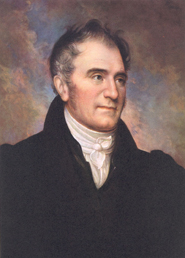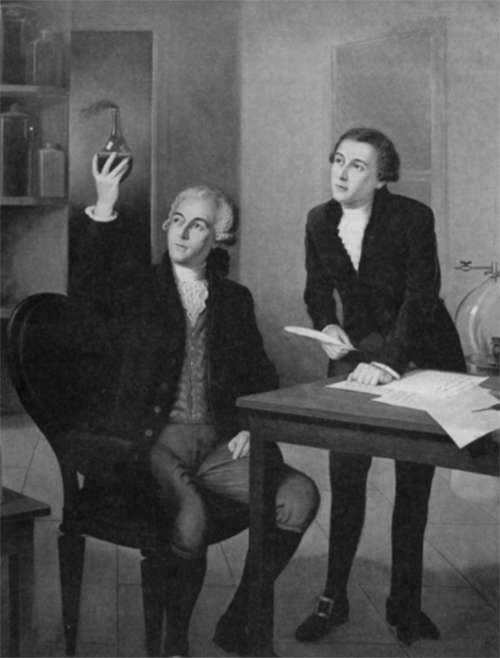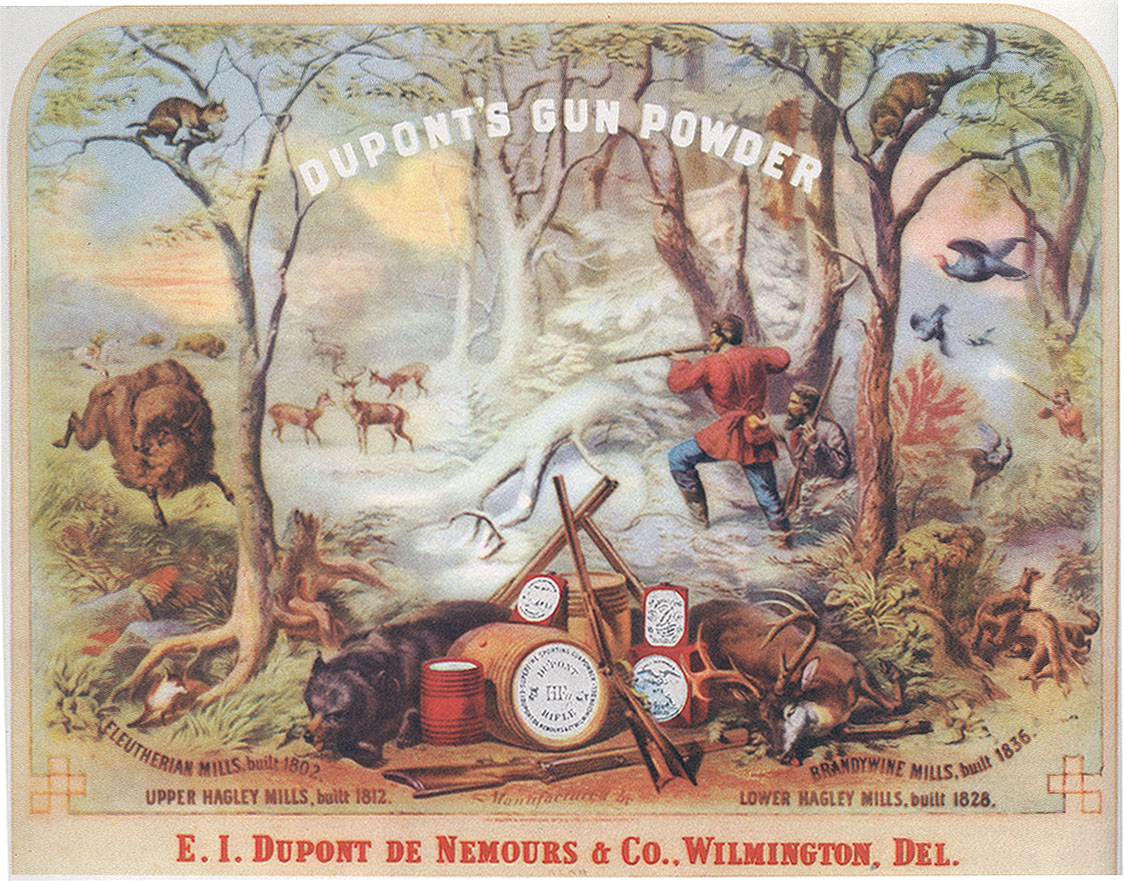
Du Pont

1772-1834
His Life and his Works
Eleuthere Irenee du Pont is the first real
example of a chemical industrialist and specialized essentially in the production of
gunpowder. Son of Pierre Samuel du Pont de Nemours and Nicole Marie Louis, he
was born in the region of Nemours, about 60 miles South of Paris in 1772. His
father was a liberal economist and publicist who worked at attempting
ineffective reforms to the old regime in its last days before the Revolution.
Following the death of his mother when he was fourteen years of age, Irenee and
his family moved from their small estate in Chevannes to an apartment in Paris.
Pierre Samuel was a member of the `Comite Consultatif d'Agriculture` at the same time as Lavoisier and their similar political agendas resulted in the forming of a friendship between the two men. Lavoisier would visit his colleague and the young Irenee found his conversation most interesting. At the time, Lavoisier was also one of the directors of the government's Gunpowder and Saltpeter Administration. Being impressed by the interest and attention displayed by Irenee, Lavoisier soon hired him and so at the age of 17, Irenee du Pont was working in the government factory at Essone, learning the secrets of gunpowder manufacturing.
Unfortunately, a year later the French revolutionaries seized control of the country. Lavoisier soon met his end on the blade of the guillotine. Irenee's father, who owned a printing house where he published counterrevolutionary pamphlets, naturally came under attack and was forced into hiding when the Jacobins suppressed the printing house. In 1799, as a desperate measure, Pierre Samuel decided to move to the United States to join his other son Victor Marie, who was at the time working for the French Consulate.
The du Ponts arrived in the States, after a long ninety-nine day journey, on New Year's Day 1800. Moving to New Jersey, Pierre Samuel intended to set up a trading and land company. However, during his first year in the country, Irenee was shocked by the price and poor quality of American gunpowder. Seeing here an ideal business opportunity, he convinced his father and several other European investors to support him and set out to find somewhere where he could put his knowledge, acquired from working with Lavoisier, to profit. He settled on a plot of land on the banks of the Brandywine, near Wilmington in Delaware. There he began the construction of his powder works in April 1802.

Despite lack of capital, Irenee improved
and innovated new techniques for production of gunpowder. He also designed a
whole new layout for the mills themselves; instead of large mills where the
production was carried out from A to Z, he constructed several small mills, each
designed for one specific stage of production. The mills themselves had 3 solid
stone walls and one wooden wall facing the Brandywine. This was a novel and
ingenious idea: in case of explosions within the mill, the wooden wall was most
likely to give way, leaving the others standing and directing the explosion
harmlessly toward the river.
Du Pont's industry was soon blooming. By 1803, the mills had produced their first saltpeter and in 1805 the industry produced nearly forty-five thousand pounds of gunpowder. Orders and demand for Du Pont gunpowder increased continuously and with the prospect of war between Britain and the States looming, things looked good for business.
In 1811, 1812 and then 1813, the American government put in huge orders for Du Pont gunpowder. In order to meet these demands, Irenee had to expand, which meant borrowing large sums of money, for although the industry was a lucrative one, its assets were tied up in goods and not raw capital. This was not to the pleasing of his initial investors who were yet to see a return on their money and they started threatening to withdraw from the business. However, Irenee's company never did collapse and over the years, his debts were slowly paid off. In 1822, he was made a director of the Bank of the United States and was sought after as a constant source of advice on the development of businesses.
Du Pont remained at the head of his company until his death in 1834. The company then came under the management of his three sons and four daughters and continued to produce high quality gunpowder as well as starting a specialized branch for the production of gunpowder. A hundred years down the line, the Du Punt industry turned to broader chemical research, constructing `Experimental Station`, where all sorts of new products were invented and investigated.
The company, nowadays known as E.I. Du Pont de Nemours, has invented many revolutionary products over the years, including teflon and nylon. It remains a forerunner in the domain of chemical research and is one of the world leaders in the development of polymers for use in plastics, clothes, machines, etc..